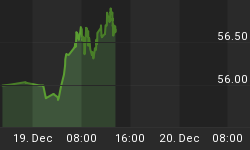Stock Market data too important to be without?
There are probably hundreds of different indicators, timing tools, models, and market data charts.
One of my all time favorites is a daily chart on what is happening relative to buying and selling by Institutional Investors. You've heard the comments of how Institutions account for over half the daily trading volume, and why this makes them the single most important controlling agent in the market.
Don't ever invest in the opposite direction of where Institutional Investors are going.
Is this good advice or not? ... Look at this year's data and you be the judge.
This chart shows the daily amount of Institutional Buying and Selling. Interpreting the chart is pretty simple:
1. If the red Selling line is above the blue Buying line, then Institutions are in Distribution so you do not want to be long when they are in Distribution. You want to sell or possibly go short.
2. If the blue Buying line is above the red Selling line, then Institutions are in Accumulation so you do not want to be shorting against them. You want to buy along with them.
There is much controversy over the May 6th. crash with pundits blaming it on a Citi trader, or on a system failure, or even on foreign sabotage.
Everyone was surprised ... right or wrong?
Wrong .... Institutions had been Accumulation since February 16th. They stayed that way until April 27th. when they had their first day of going into Distribution. And then on May 4th. (two days before the precipitous market drop), they were in full Distribution and have been in Distribution since then. (We also had our Super Accelerator model give a sell signal on May 4th.)
So, two days before the big surprise drop that nobody can explain, Institutional Investors were in Distribution. What do you make of that?
*** Our message today is clear and simple ... do NOT be invested in the opposite direction of where Institutional Investors are going.
(Note: Today's chart is presented as a courtesy to our free members and can be found every day on our Standard Investor paid site; Section 4, Chart 6.)
















